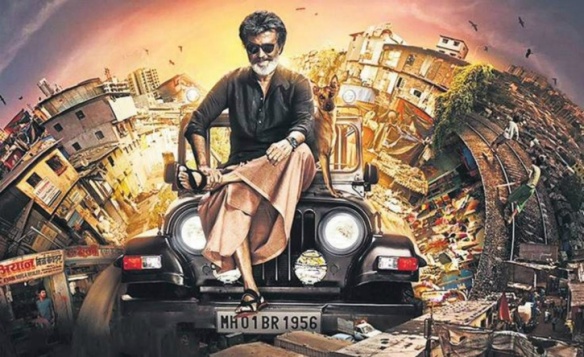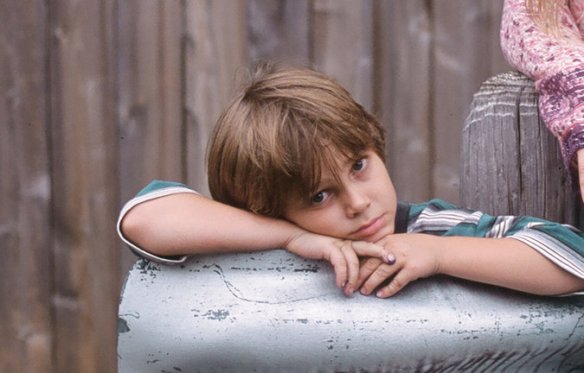It was a Thursday morning at 8:30 AM and we found ourselves in Matunga. The right thing to do under those circumstances was to immediately head to Cafe Madras or Cafe Mysore for some Idli, vada and coffee. We chose Mysore because you know, Underdogs. Which was ironic given we were walking down from Aurora Cinema, after catching the FDFS of Kaala at a conveniently timed 5:30 AM show. Clearly, overdog behaviour. But that wasn’t the oddest thing about that morning. Here were three men, who would bleed cinema if you cut them, but ten minutes and a few polite enquiries about Dalit symbolism in the film later, we were talking about weather, traffic and such, over the breakfast. Bordering almost on ‘no dog’ behaviour.
Which could have been partly because I did not have a dog in this fight. I did not grow up a Superstar fan. We were in the ‘other’ camp. The one that lost to Rajini’s films every Deepavali in box office collections, like Zimbabwe touring Australia. It is not about whether you will win, but by how much will you lose. So you can understand the fact that I was doing a FDFS Rajini film after more than a decade.
The festivities before the gates opened at Aurora set the tone beautifully. You gotta give it to the ‘Aussies’. They know a good time! As we entered the gates finally, dawn was breaking and rain was receding. We walked through a door that was dwarfed by a giant cut out of Kaala outside, which was so tall that one could only see his feet. The experience was more religious than cinematic.
The film begins with a riveting opening sequence – bull dozers Vs slum. But the drama isn’t coming from either. The scene is entirely fueled by the fire in Anjali Patil’s eyes. A fire that will see the film through at multiple points later. As the Hero is being called for to save the day, the fans break loose. This is Why they are here. The Entry. But Kaala is introduced as an aged uncle playing cricket with kids and losing his middle stump to a child’s delivery. I couldnt believe it and the fans obviously couldnt either. So decibels die down gradually. As a matter of fact, it will be another half hour or so before it will even resurface.
It is clear that Pa. Ranjith wants us to get used to ‘this’ Rajini. The one who doesn’t mind his son saving his life. One who doesnt mind being beaten up in a police station. The one who has grand children. The one who is lost in love. He wants us to get used to ‘this’ guy. But I wonder if it is too much to ask from the fans who just emptied a pot of milk on a wooden cut out at 5:00 AM. But Ranjith doesn’t stop there. He wants more. He wants us to feel the romance in Santosh Narayanan’s ‘Kannamma’, set on two people (Rajini & Huma) who we were introduced to us just five minutes back. He wants us to just imagine their entire backstory. He doesn’t even stop there.
If ten years back…scratch that. If last week, you had told me that there will be a Rajini film in which the villain kills his wife, sons, son’s girlfriend and best friend, beats him to pulp in a police station, not budge one bit to anything he wants, burns down his house and still be standing at the end of the film, or that Ranjith would make a Rajini film where Tamil seems force fitted, I would have asked you, “kya re! jokingaa?”. But this happens and Ranjith wants you to be OK with it. In fact, after all this, when Rajini walks into the villain’s den and delivers a punch dialogue that ‘you cannot kill me!!’, he wants the theatre to erupt with adrenaline and not laugh. Very pavlovian. Very ‘all are dog’ behaviour.
But then, Rajini looks like a million bucks! And is so much at home in his chair surrounded by grand children, romancing his wife, as he is on a bridge, killing the bad guys with one umbrella and much swag. He is at home in the backdrop of Santosh’s extraordinary hip hop meets metal OST. You do agree with Ranjith that he should do more of this. The most electrifying duo on screen is not Rajini and the villain, but the protagonist and his wife, essayed beautifully by Easwari Rao. Their romance is quite the soul of this film. And you do agree with Ranjith that there should be more of this.
The film is not replete with only Dalit symbolism. It doffs it’s hat equally to the Superstar as well. Rajini’s house for example is a strong character in the film, much like Annamalai or Dharmadurai or Yejaman. At a time when his nativity is being questioned politically, to have a character named Shivaji Rao Gaekwad, makes the film that much more personal to the star. And the drunk humour in the police station is reminiscent of the nineties, when it used to be a regular fixture. There is so much swag and chutzpah in this Kaala that he doesnt have to light a single cigarette. We can get used to this Shivaji Rao, Ranjith.

As we exited Aurora cinema and stepped on to Bhimrao Ambedkar Road, there was only one question in my mind. Kaala is a film that you will watch for a few hours and discuss for many days. The film is about left ideology and Dalit human rights. It is not veiled that Rajini is just a vehicle. Everything else is just a vehicle. For many days to come, you will hear endlessly about these ‘easter eggs’ in the film – the number plate of his Mahindra Thar (BR 1956, which denotes the year B.R. Ambedkar converted to Buddhism), the fact that Nana Patekar’s character, dressed in white, does not drink the water offered to him in Rajini’s house, but the latter does it when the situation reverses, the Buddha viharam and the ‘Jai bheem’ flags in the set, the delectable way in which ‘Swachch Bharat’ has been satirized, the blue shirts inside his black suits, the ‘Raavana Kaaviyam’ book on Kaala’s desk, the fact that the villain refers to Kaala as the ‘Raavan’ and the instrument used to kill his family looks uncannily like a mace. And people will write books on that extraordinary climax. Some of these, you will notice while watching the film. Many, you will miss and would want to watch the film again, to appreciate and earn the goose bumps.
But as I gulped down the King size filter coffee at Cafe Mysore that morning, I couldn’t help thinking, why should such an important social commentary be so subtle? What is the crying need that prevents it from being more accessible? Is the Auteur’s style more important than the message itself? or does Ranjith feel the World is not yet ready for it. I am not even sure if they are ready for this Rajini. May be they arent. And may be, that is not important.














